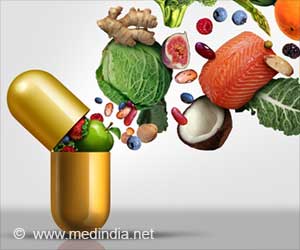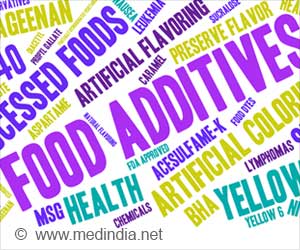- Dietary difficulties are to blame for the majority of new instances of type 2 diabetes worldwide
- Eating too much-refined grain and wheat, as well as processed meats, were the primary causes of diet-related type 2 diabetes
- Central and Eastern Europe and Central Asia were the regions of the world where nutrition was more to blame for the disease
According to a new study, 11 dietary factors were responsible for 70.3% of the world's 14.1 million new diagnoses of type 2 diabetes (T2D) in 2018. Three dietary factors stood out as the leading causes of new cases of type 2 diabetes worldwide: insufficient levels of whole grains, excessive consumption of refined grains and wheat, and processed meats.
A lack of whole grains accounted for 26.1% of all new cases caused by nutrition difficulties, too much-refined grains and wheat contributed to 24.6%, and processed meat intake accounted for 20.3%. Overall, low carbohydrate quality is a major contributor to the development of type 2 diabetes.
Diabetes-Friendly Meals vs. Refined Carbohydrates
"The scientific evidence linking refined grains consumption to type 2 diabetes is clear," said Tufts' Dr. Meghan O'Hearn, Ph.D., the study's first author. "Refined grains, starches, and sugars cause rapid blood glucose spikes, fat conversion in the liver accumulating around abdominal organs, and can displace other healthier foods (like whole grains) in people's diets, all of which lead to an increased risk of type 2 diabetes."According to Dr. Vasanti Malik, Sc.D. of the University of Toronto, "whole grains have a lower glycemic index — blood glucose-raising potential — than refined grains because they are digested and absorbed more slowly due to fiber, which is beneficial for diabetes."
Type 2 Diabetes and Diet: The Most Influential Areas
According to the study, the two regions with the highest incidence of type 2 diabetes (T2D) from dietary factors were central and eastern Europe and central Asia, which accounted for 85.6% of new T2D diagnoses in those regions. Diet was responsible for 81.8% of new cases in Latin America and the Caribbean.South Asia has the lowest percentage of T2D caused by food, at 55.4%. "In East Asia, for example, increases in type 2 diabetes due to excess unprocessed red meat consumption from 1990 to 2018 mirror the region's tremendous population growth, increased urbanization, and demographic shifts," Dr. O'Hearn noted.
High-income countries, as well as those in central and eastern Europe and central Asia, were exceptions, with T2D connected to food being more common in rural populations and those with less education. Despite having the highest incidence of T2D due to dietary causes, Central and Eastern Europe and Central Asia had declining rates of T2D due to excessive red meat consumption.
Dr. O'Hearn went on to say that the lowering incidence of red meat-related T2D in these places could be attributed to a "growing awareness among consumers and businesses alike of the negative human health impacts and planetary health strains of red meat consumption."
"Our findings mirror local socioeconomic contexts in many ways," Dr. O'Hearn remarked. "The food environment is an important factor because it influences food access and availability (for example, easy access to low-cost, fast foods or low-quality processed foods in low-income areas)," Dr. Malik added.
Dietary Importance in Type 2 Diabetes
Younger persons had the highest percentage of type 2 diabetes cases attributed to food, although having fewer T2D diagnoses overall. Even with a lower percentage of T2D cases, the group with the highest raw number of such cases was middle-aged adults aged 45 to 60 years old."There is a need for widespread nutrition education and other policies that can help consumers make more healthful choices," Dr. Malik stated. She cited "front-of-package labeling, restricting unhealthy food/beverage marketing to children, sugary beverage taxation, and [creating] healthful food environments — i.e., school meal programs — [and] nutrition standards in institutions, etc." as examples.
Dr. O'Hearn is now the Impact Director for Food Systems of the Future, an organization that, in her words, "was founded to catalyze, enable, and scale market-driven ag tech, food tech, and innovative businesses across the value chain to improve nutrition outcomes in underserved and low-income communities."
Source-Medindia
















